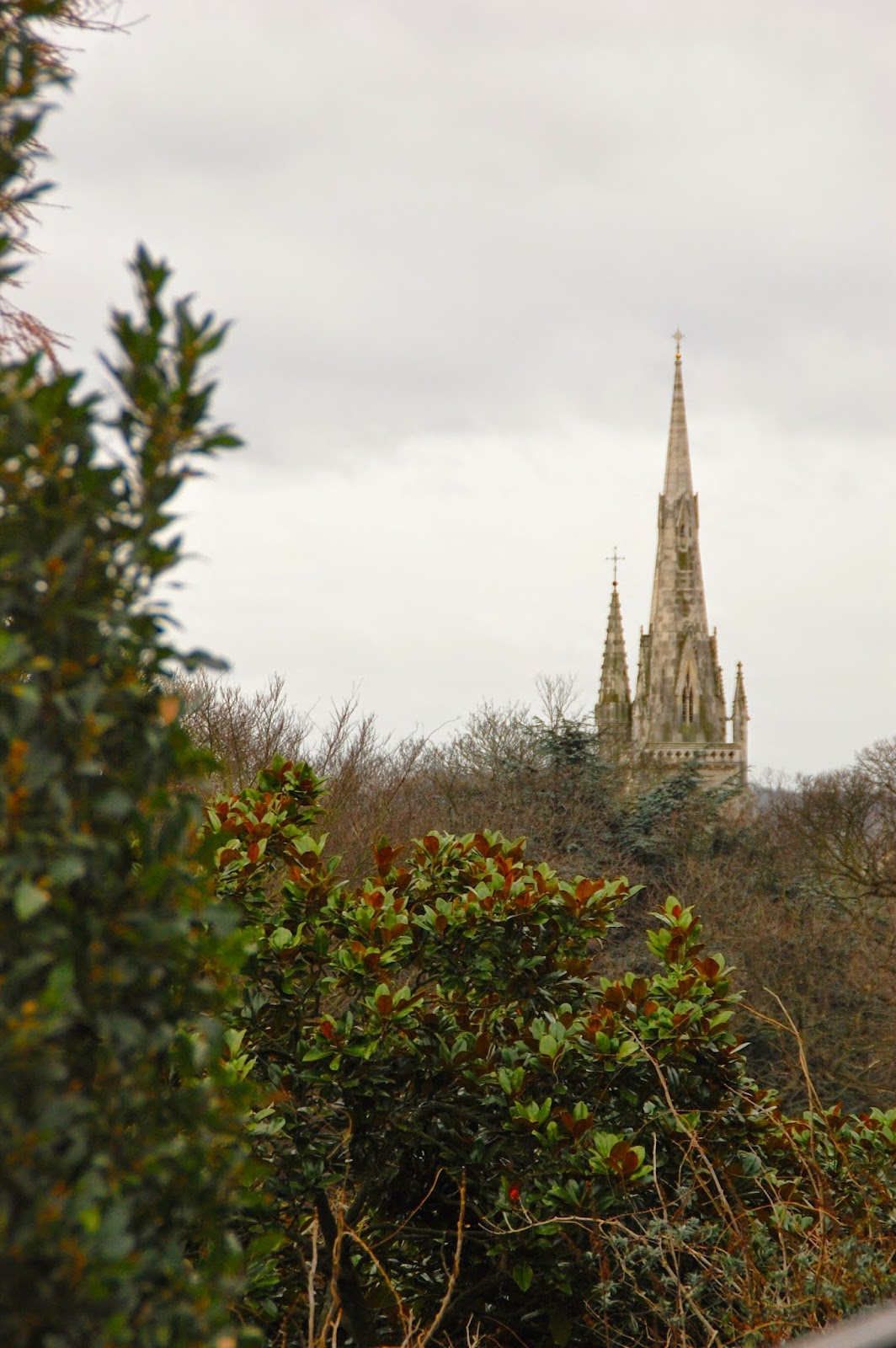Mr. Lloyd's Standard Telescope, 153.83 feet above the mean level of the sea. (Phil: Trans: 1831)
How would it be to sit in the chair, lean back, open the roof, and gaze through the telescope into the heavens?
Standing East and West at the same time!
The red ball drops each day at 5 minutes to 1 p.m., for all the world to set their clocks to the correct time.
From the observatory we walked down the hill along the path into the Borough of Greenwich. When we came out onto the street, the Cutty Sark was straight ahead.
The path down from the observatory.
The backside of the Queen's house, the National Meritime Museum on the left, and the Thames separating Greenwich from London.
The Cutty Sark is a British "clipper" ship built in 1869. It was one of the last tea clippers to be built and was the fastest, traveling up to almost 20 miles an hour. It is of original composite construction of a wooden hull on an iron frame.
Having lunch under the ship. Hey, look! There is a dinner bell like ours!
Ropes, ropes, and more ropes! A clipper ship is reliant upon miles and miles of ropes.
In the hold we saw shipping containers of the many varieties of tea the ship hauled.
We had flat lizard with us!
Our next stop was the National Maritime Museum. We viewed various water craft and their parts as well as Lord Horatio Nelson's jacket that sustained the fatal bullet-hole.
Note the hole in the left shoulder. The bullet shattered the shoulder, punctured the lung, and lodged in his spine. The Battle of Traflagar was a naval engagement of the Royal Navy against the combined fleets of the French and Spanish navies, occurring on 21 October 1805. The British came off victorious.
The Queen's House was built 1616-1619 for Anne of Denmark, queen of King James I of England. It is known as the first classical building to have been constructed in Britian. This is a view of the ceiling in the Queen's bedroom. I wonder how she enjoyed it while in bed, seeing that there would be a canopy on the bed.
The black and while tiled floor is amazing. Many of the houses and buildings have floors in this style.
From the Queen's House, views back up the hill from whence we came.
Not sure what it is, but it does make a nice picture.



























No comments:
Post a Comment